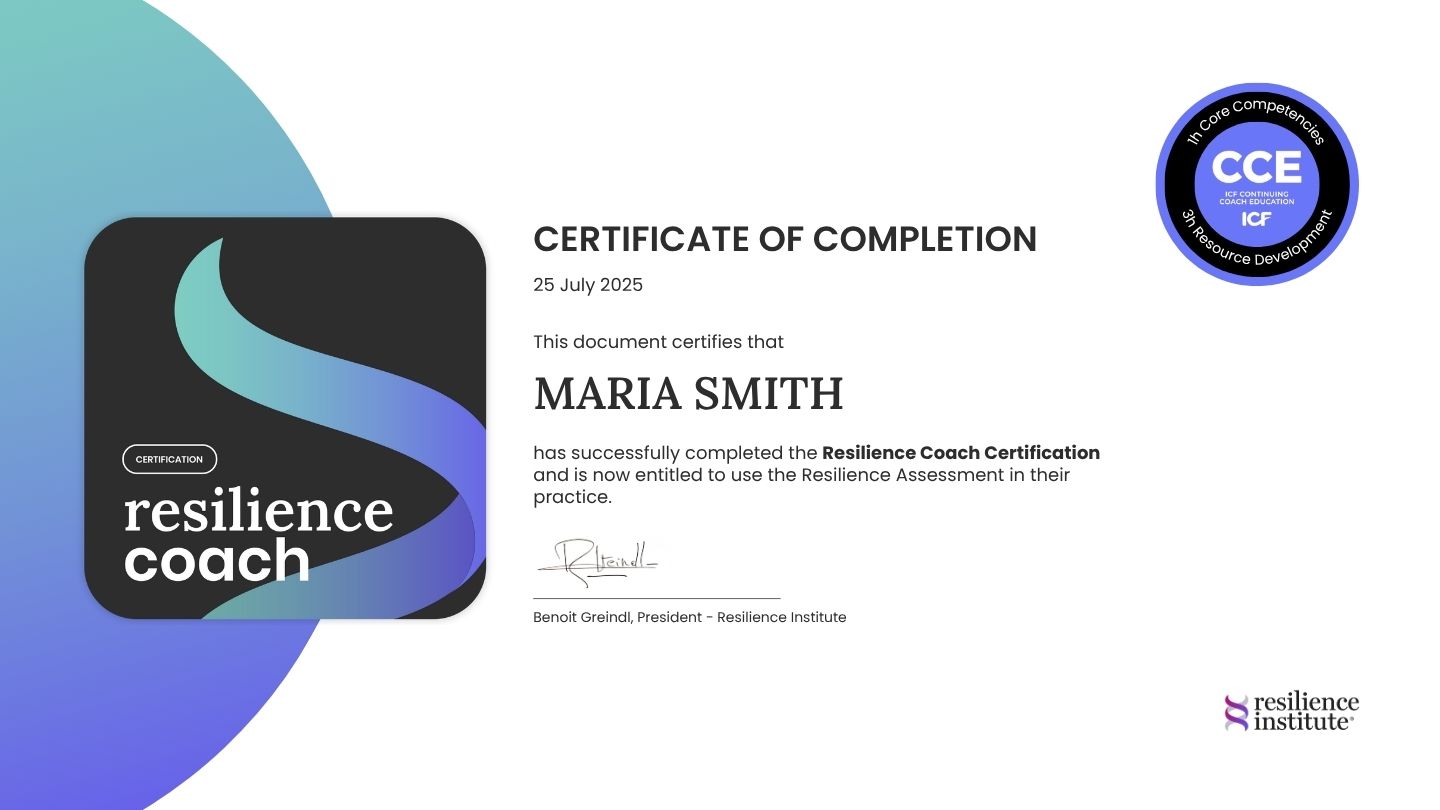
How Cognitive Behavioral Therapy (CBT) Supports Resilience
Resilience—the ability to adapt, recover, and grow stronger in the face of adversity—is a vital skill in navigating life’s challenges. Cognitive Behavioral Therapy (CBT), an evidence-based therapeutic approach, not only helps individuals overcome mental health struggles but also lays a solid foundation for building resilience.
What is Cognitive Behavioral Therapy?
At its core, CBT is a structured, goal-oriented form of therapy based on the idea that our thoughts, feelings, and behaviors are deeply interconnected. It focuses on identifying and changing unhelpful thought patterns to promote healthier emotional responses and behaviors.
Unlike other therapies that might dwell extensively on the past, CBT is practical and action-focused. It aims to equip individuals with tools they can use in their daily lives to face challenges with clarity and strength.
A Real-Life Example
Imagine you’re giving a presentation at work. As you prepare, a thought pops into your head: “I’m going to mess this up, and everyone will think I’m incompetent.” This thought leads to feelings of anxiety, self-doubt, and even physical symptoms like a racing heart. These emotions might make you avoid the presentation or rush through it nervously, reinforcing your fear of failure.
In CBT, a therapist would help you recognize this thought as negative and distorted. They might ask: “What evidence do you have that you’ll fail? or What’s another way to look at this situation?” You might reframe the thought to: “I’ve prepared for this, and even if I stumble, it’s a learning opportunity.” This shift in perspective reduces your anxiety, enabling you to perform more confidently.
How CBT Builds Resilience
CBT strengthens resilience by addressing key areas that help individuals bounce back from stress and adversity. Here’s how:
- Reframing Negative Thoughts
CBT helps individuals challenge automatic negative thoughts and replace them with constructive, balanced perspectives. Instead of catastrophizing, you learn to approach challenges with optimism and problem-solving. - Developing Problem-Solving Skills
Resilient individuals tackle problems head-on. CBT teaches practical strategies to break down overwhelming challenges into smaller, actionable steps, making even the most daunting tasks feel manageable. - Enhancing Emotional Regulation
By focusing on the connection between thoughts and feelings, CBT equips individuals with tools to manage intense emotions. Techniques like mindfulness and relaxation exercises help build emotional stability under pressure. - Building Confidence Through Action
CBT encourages taking small, meaningful steps toward goals, boosting self-efficacy—a belief in your ability to succeed. This confidence becomes a cornerstone of resilience.
CBT Techniques You Can Apply Today
Even without formal therapy, you can start using CBT principles to build resilience. These techniques are practical, actionable, and proven to help you regulate emotions, think more clearly, and adapt to challenges. Here’s how:
1. Thought Journaling
What it is: Thought journaling helps you identify and challenge negative thought patterns that may be holding you back.
How to do it:
- Write down a specific situation that caused stress or negative emotions. For example: “I made a mistake at work, and now I feel like a failure.”
- Note the automatic thoughts that arose in that moment. These might be thoughts like: “I’m terrible at my job” or “Everyone will think I’m incompetent.”
- Ask yourself: Is this thought 100% true? What evidence do I have to support or contradict it?
- Reframe the thought to something more balanced: “Everyone makes mistakes. This is a learning opportunity, and I can improve next time.”
Why it helps: This technique teaches you to question irrational beliefs, replace them with healthier perspectives, and reduce emotional distress.
2. Behavioral Activation
What it is: Behavioral activation involves intentionally engaging in meaningful activities, even when you don’t feel motivated. It’s about action leading to positive emotions, not the other way around.
How to do it:
- Identify activities that align with your values or bring you joy—such as exercising, spending time with loved ones, or pursuing a hobby.
- Start small. If the idea of a full workout feels overwhelming, begin with a 5-minute walk.
- Use a schedule or checklist to plan these activities and hold yourself accountable.
- Pay attention to how you feel afterward. You’ll often notice a boost in mood or energy.
Why it helps: By breaking the cycle of inactivity and negative emotions, behavioral activation creates momentum for positive change.
3. Mindfulness and Relaxation
What it is: Mindfulness and relaxation techniques help you stay present and manage emotional overwhelm, a crucial part of resilience. Mindfulness is about observing your thoughts and feelings without judgment, allowing you to respond intentionally rather than react impulsively.
How to do it:
- Mindfulness: Practice being fully present in the moment. For example:
- Imagine you’re in a meeting and a thought pops up: “I’m going to say something stupid.”
- Instead of letting the thought spiral into anxiety, pause and observe it. Ask yourself: “Why am I thinking this? Is it helping me? or What’s the worst that could happen?”
- Acknowledge the thought, but don’t let it define your reaction. Reframe it: “I’m prepared, and even if I make a mistake, I can recover.”
- Shift your focus back to what’s happening in the meeting—what’s being said, your breathing, or the feel of the chair beneath you.
- Deep Breathing: When you notice your mind racing, pause and take a deep breath. Inhale through your nose for four seconds, hold for four, and exhale for six. This simple act helps ground you in the present.
- Progressive Muscle Relaxation: If you’re feeling physically tense, focus on each muscle group in your body. Start at your feet, clench the muscles tightly for a few seconds, and then release. Gradually move upward through your body.
Why it helps: Practicing mindfulness in these small, real-life situations builds your ability to notice unhelpful thoughts without getting swept up in them. Over time, this awareness becomes second nature, helping you remain calm and composed even in high-pressure moments.
4. Set Realistic Goals
What it is: Breaking larger tasks into smaller steps makes them more manageable and builds a sense of accomplishment, reinforcing resilience.
How to do it:
- Identify a big goal that feels overwhelming, such as “get healthier.”
- Break it into specific, actionable steps, like “walk 20 minutes three times a week” or “add one serving of vegetables to lunch.”
- Set short-term milestones and track your progress.
- Celebrate even small wins to build motivation and confidence.
Why it helps: By focusing on achievable steps, you avoid feeling paralyzed by the magnitude of a larger goal. Progress reinforces your ability to tackle challenges.
CBT as a Path to Resilience
Resilience isn’t about avoiding adversity—it’s about learning to thrive through it. Cognitive Behavioral Therapy offers practical, science-backed tools to navigate life’s ups and downs with greater strength and clarity. Whether through reframing thoughts, managing emotions, or building confidence, CBT helps you transform challenges into opportunities for growth.
If you’re ready to explore how CBT can support your resilience, consider speaking with a qualified therapist or integrating CBT-based strategies into your daily routine. Remember, resilience is a skill you can build—and CBT is one of the most effective ways to star
Explore More: Videos and Books on CBT and Resilience
Here are some valuable resources to deepen your understanding of CBT and its role in fostering resilience:
Recommended Videos
- “What is Cognitive Behavioral Therapy?” by Psych Hub
A concise, engaging explanation of CBT and how it works. Perfect for beginners.
Watch on YouTube - “Cognitive Behavioral Therapy (CBT) Simply Explained” by Therapist Aid
A clear and practical overview of CBT principles and their application in everyday life.
Watch on YouTube
Recommended Books
- “Feeling Good: The New Mood Therapy” by Dr. David D. Burns
A foundational book on CBT, offering tools for combating negative thoughts and improving emotional well-being.
Find on Amazon - “Mind Over Mood: Change How You Feel by Changing the Way You Think” by Dennis Greenberger and Christine Padesky
A highly practical workbook for applying CBT principles in daily life.
Find on Amazon

